CarEdge saved me over 4,500 dollars on a brand new Honda Pilot. I can't say thank you enough.
Price intelligence
Find a wide range of vehicle listings with market insights on new and used listings near you.


Help us personalize your CarEdge experience — it only takes a second.
Your answers help us personalize your CarEdge journey — we’ll follow up with tips and next steps that match your buying timeline.

You don’t have to spend one hundred grand to purchase an electric vehicle with great range in 2022. EVs aren’t cheap, but with fuel savings taken into account, the electric lifestyle starts to sound a lot more appealing. There’s a saying in electric mobility: range is king. That’s especially true for frequent road-trippers and those who live in one of America’s remaining charging deserts. These are the electric vehicles with the most range in 2022.
Note: We’ve decided to place an emphasis on affordable electric vehicles with the most range. Affordability is a moving target in 2022’s crazy auto market, but in the realm of EVs, we’ve defined ‘affordable’ as EVs under $65,000. If you’re in the market for luxury, we’ve got those covered too.
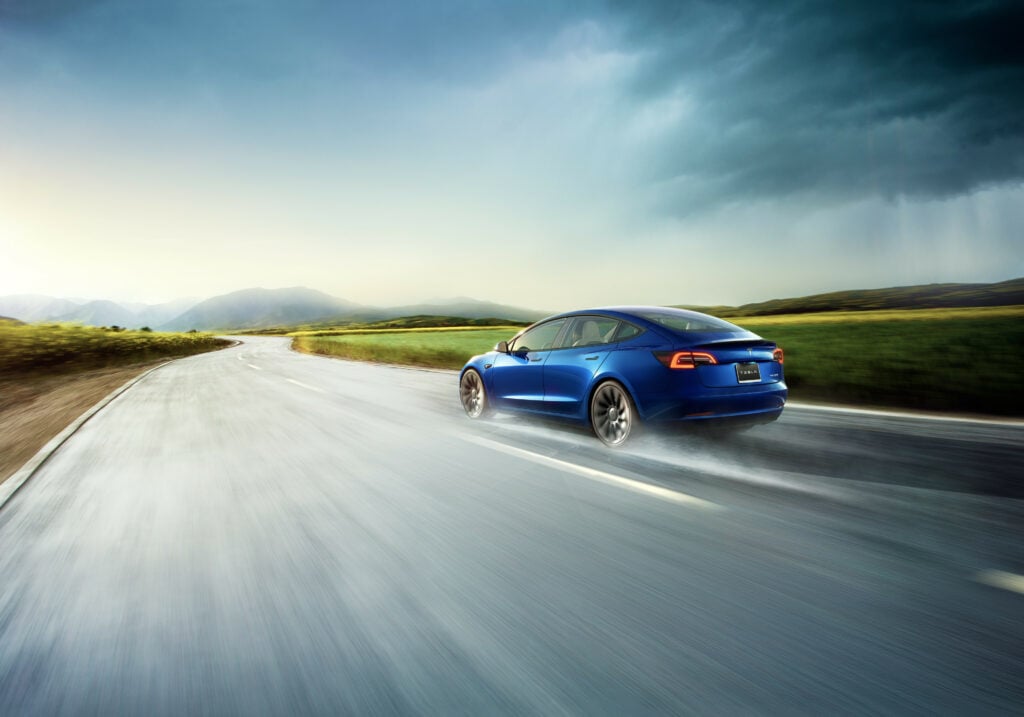
Range: 358 miles
Price: $57,190 with destination
Max charging speed: 250 kW (20-80% in 20 minutes, adding 214 miles of range)
0-60 mph (fun factor):
Federal EV tax credit qualification: No, credits were exhausted. Learn about EV incentives here.
See our full review of the 2022 Tesla Model 3 Long Range here.
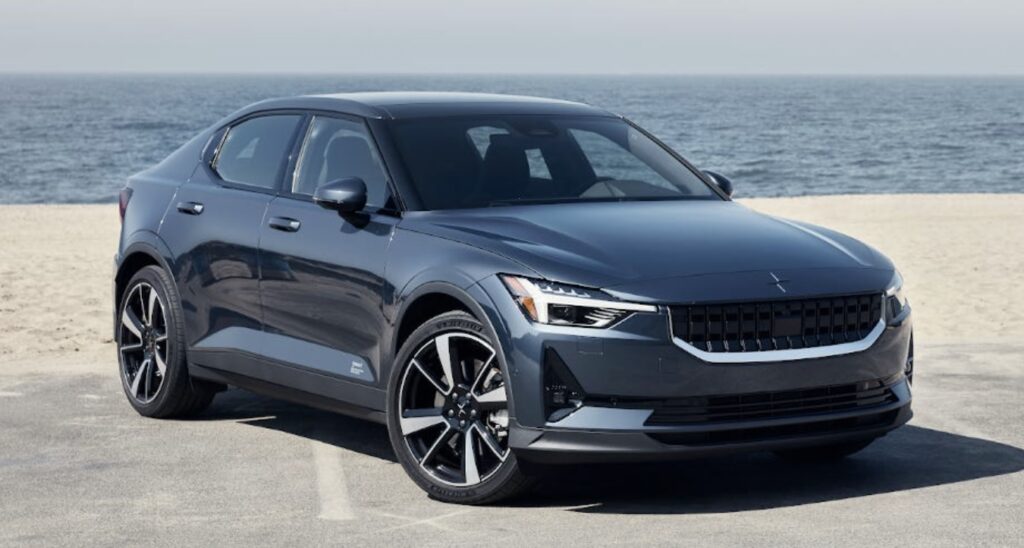
Range: 270 miles
Price: $49,800 with destination
Max charging speed: 250 kW (20-80% in 20 minutes, adding 214 miles of range)
0-60 mph (fun factor): 6.8 seconds
Federal EV tax credit qualification: Yes, learn more about EV incentives here.
See our full review of the Polestar 2 here.
Range: 272 miles
Price: $48,190 with destination
Max charging speed: 150 kW (20-80% in 20 minutes, adding 163 miles of range)
0-60 mph (fun factor): 5.8 seconds
Federal EV tax credit qualification: No, credits were exhausted. Learn about EV incentives here.
See our full review of the 2022 Tesla Model 3 here.
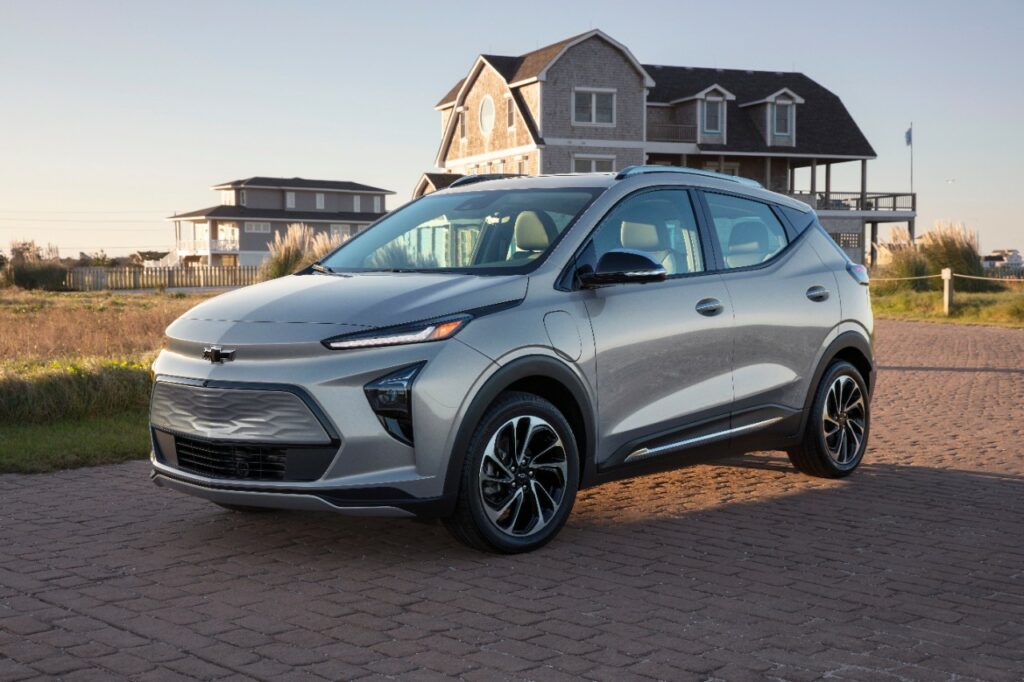
Range: 259 miles
Price: $26,595 with destination (most affordable EV available today)
Max charging speed: 55 kW (adding 100 miles of range in 30 minutes, or 200 miles of range in 75 minutes)
0-60 mph (fun factor): 6.8 seconds
Federal EV tax credit qualification: No, credits were exhausted. Learn about EV incentives here.
See our full review of the Chevrolet Bolt here.
Here’s our list of the cheapest electric cars available today
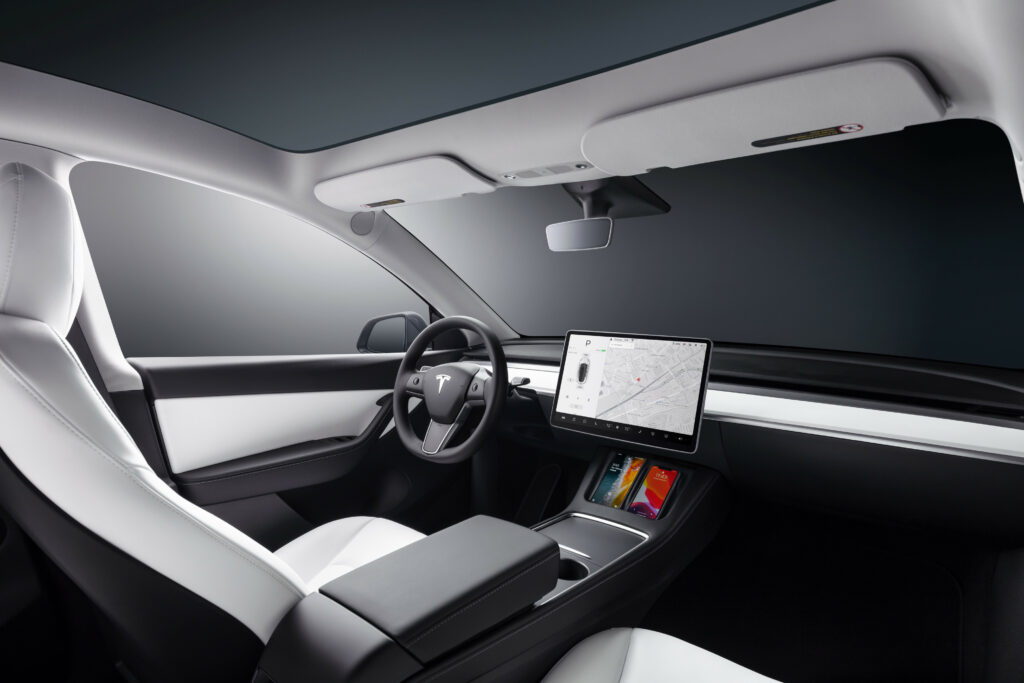
Range: 330 miles
Price: $64,190 with destination
Max charging speed: 250 kW (adding 100 miles of range in 30 minutes, or 200 miles of range in 75 minutes)
0-60 mph (fun factor): 4.8 seconds
Federal EV tax credit qualification: No, credits were exhausted. Learn about EV incentives here.
See our full review of the Tesla Model Y here.
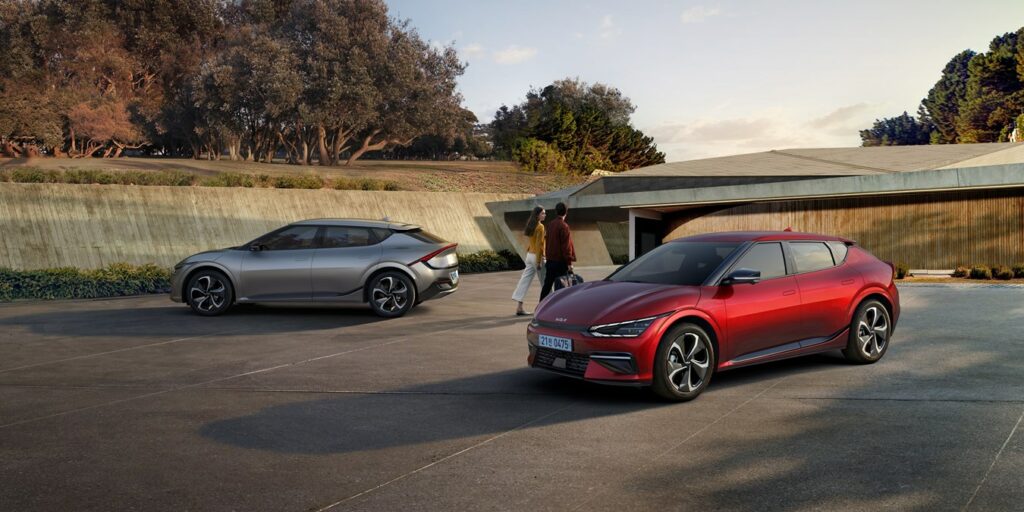
Range: 310 miles
Price: $42,155 with destination
Max charging speed: 235 kW (15-80% in 20 minutes, adding 217 miles of range in 18 minutes)
0-60 mph (fun factor): 7.3 seconds
Federal EV tax credit qualification: Yes, learn more about EV incentives here.
See our full review of the Kia EV6 here.
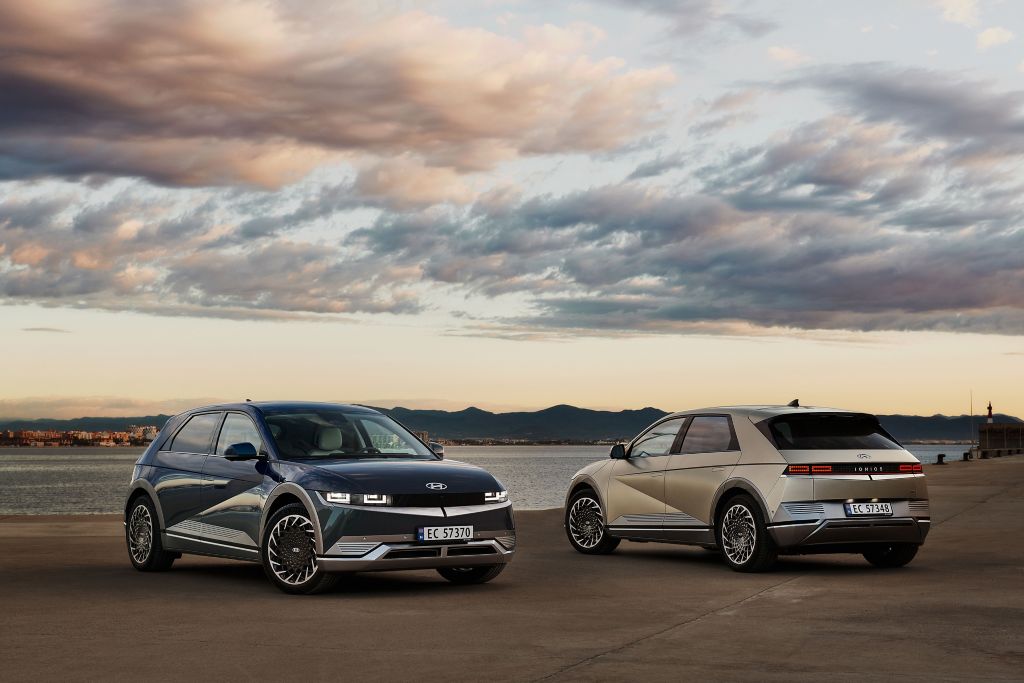
Range: 303 miles
Price: $45,295 with destination
Max charging speed: 235 kW (15-80% in 20 minutes, adding 197 miles of range in 18 minutes)
0-60 mph (fun factor): 7.5 seconds
Federal EV tax credit qualification: Yes, learn more about EV incentives here.
See our full review of the Hyundai IONIQ 5 here.
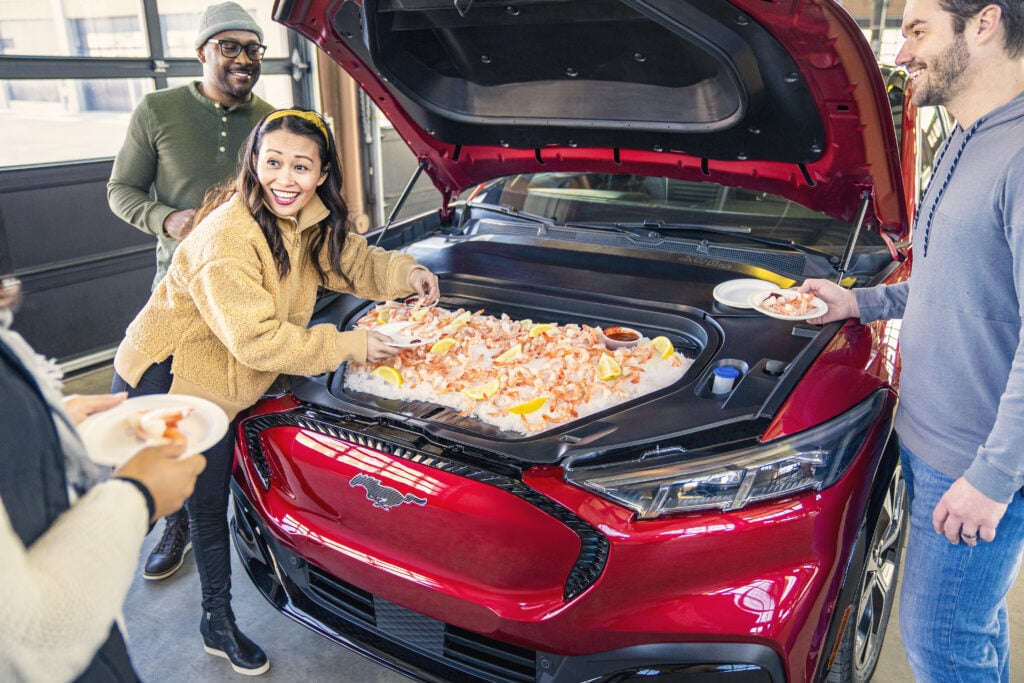
Range: 314 miles
Price: $53,550 with destination
Max charging speed: 150 kW (10-80% in 45 minutes, adding 220 miles of range)
0-60 mph (fun factor): 6.1 seconds
Federal EV tax credit qualification: Yes, learn more about EV incentives here.
See our full review of the Ford Mustang Mach-E here.
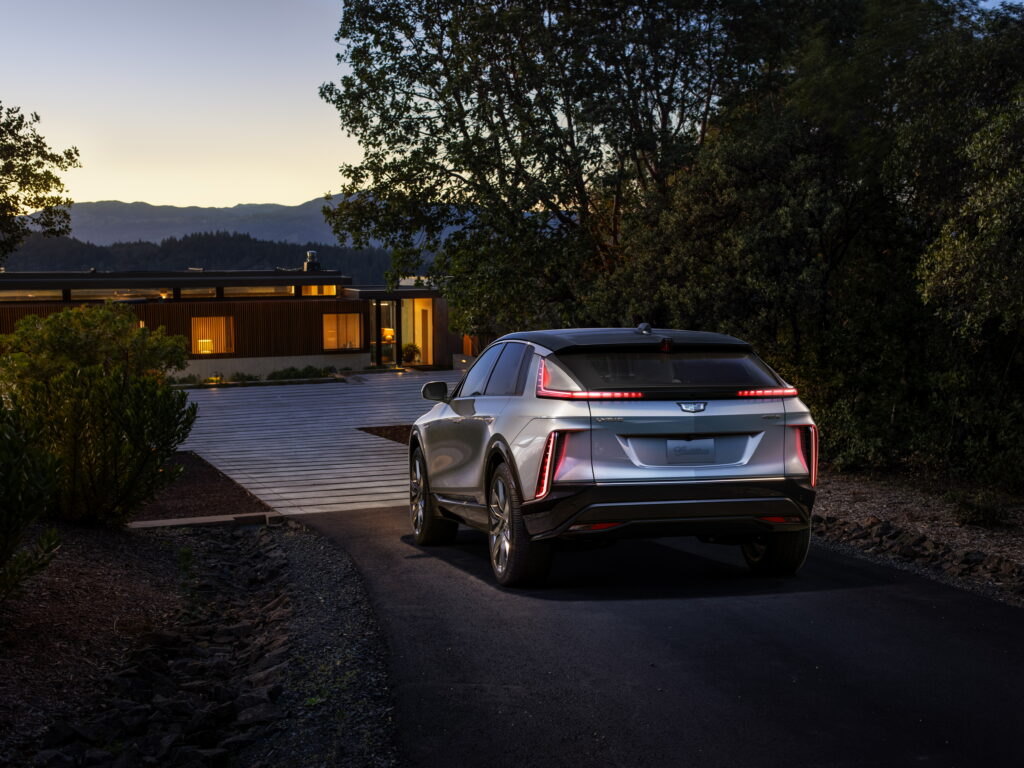
Range: 312 miles
Price: $64,185 with destination
Max charging speed: 190 kW (adding 195 miles of range in 30 minutes)
0-60 mph (fun factor): 6.4 seconds
Federal EV tax credit qualification: No, credits were exhausted. Learn about EV incentives here.
See our full review of the Cadillac Lyriq here.
See the latest EV availability and wait times for EVERY model
There are now three electric pickup trucks on American roads, but buying one is easier said than done. Everyone wants one, and wait lists extend months and in some cases, years. We’ve decided to include electric trucks that are not yet available for purchase, so long as specs have been released and reservations or orders can be placed today.
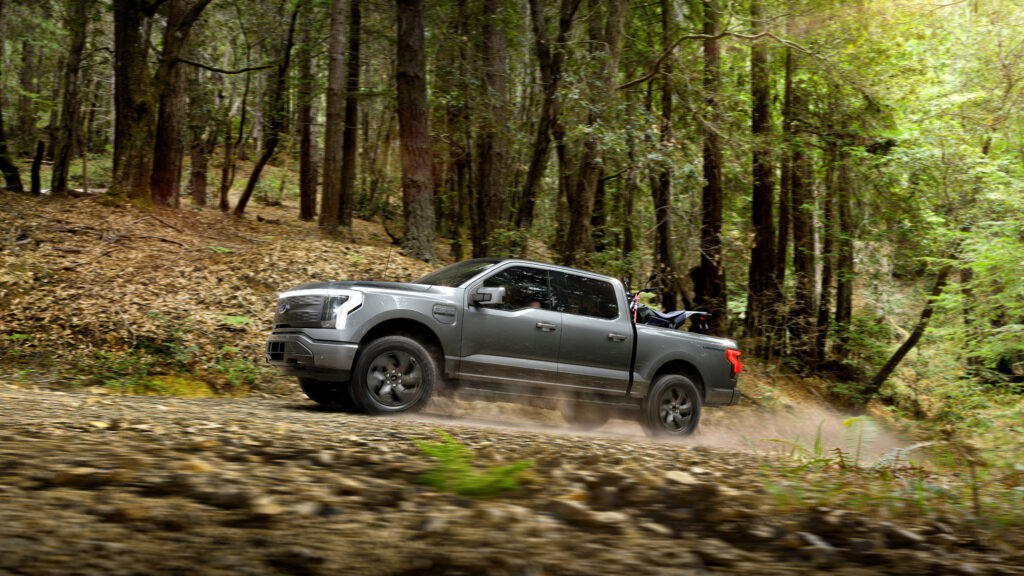
Range: 320 miles
Price: $72,474
Max charging speed: 130 kW (15-80% in 40 minutes)
0-60 mph (fun factor): estimated 4.5 seconds
Federal EV tax credit qualification: Yes, learn more about EV incentives here.
See our full review of the F-150 Lightning here.
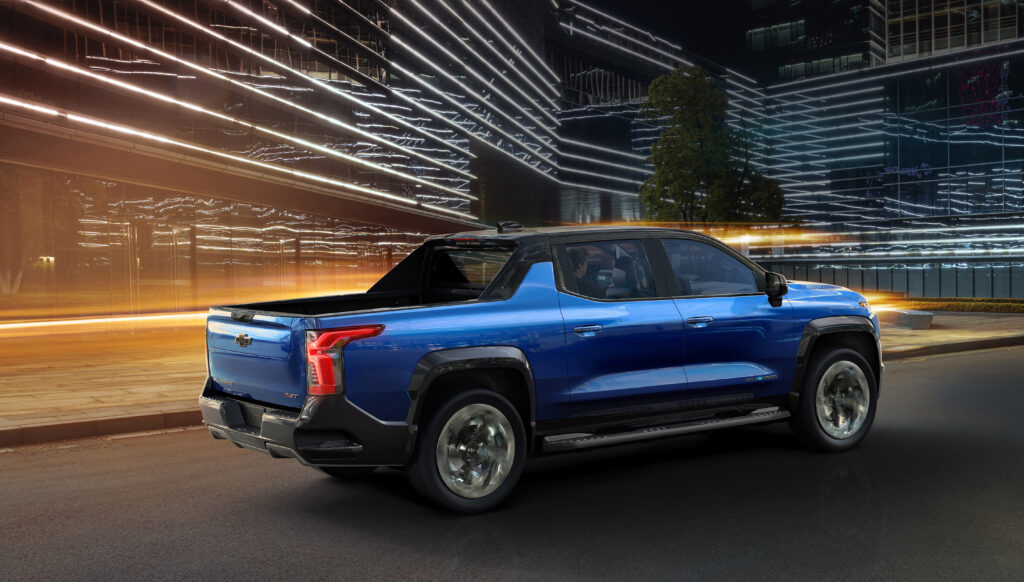
Range: Estimated 400 miles
Price: $42,000 – $100,000+
Max charging speed: 350 kW (adding 100 miles of range in 10 minutes)
0-60 mph (fun factor): N/A
Federal EV tax credit qualification: No, credits were exhausted. Learn about EV incentives here.
See our full review of the Silverado EV here.
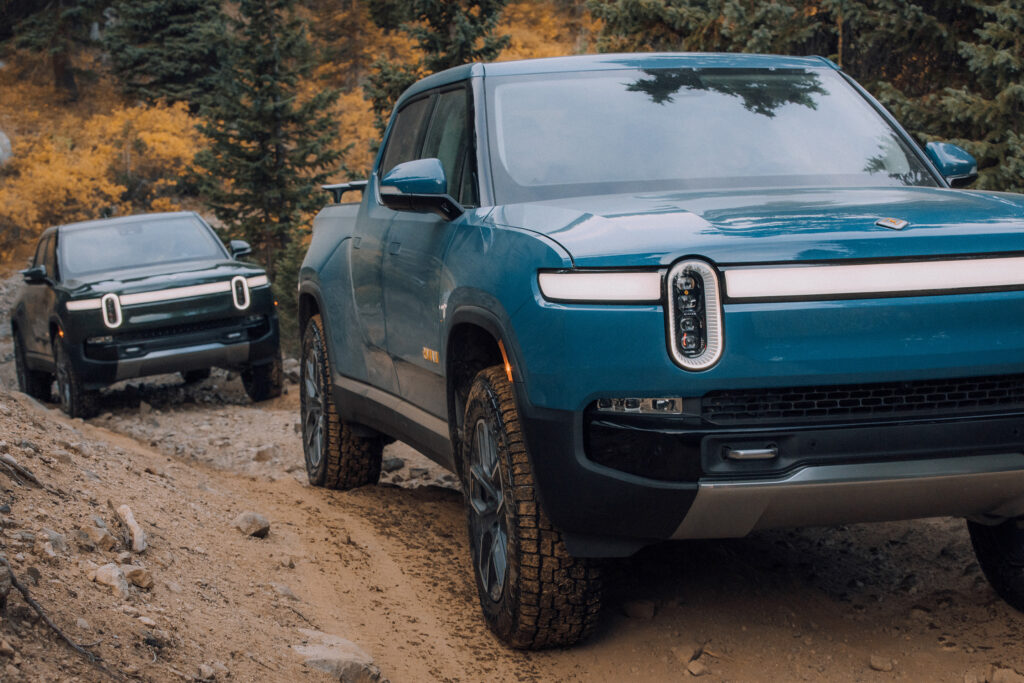
Range: 314 miles
Price: $80,000 – $100,000+
Max charging speed: 220 kW (10-80% in 40 minutes)
0-60 mph (fun factor): 3.0 seconds
Federal EV tax credit qualification: Yes, learn more about EV incentives here.
Learn more about Rivian’s R1T and R1S full-size SUV.
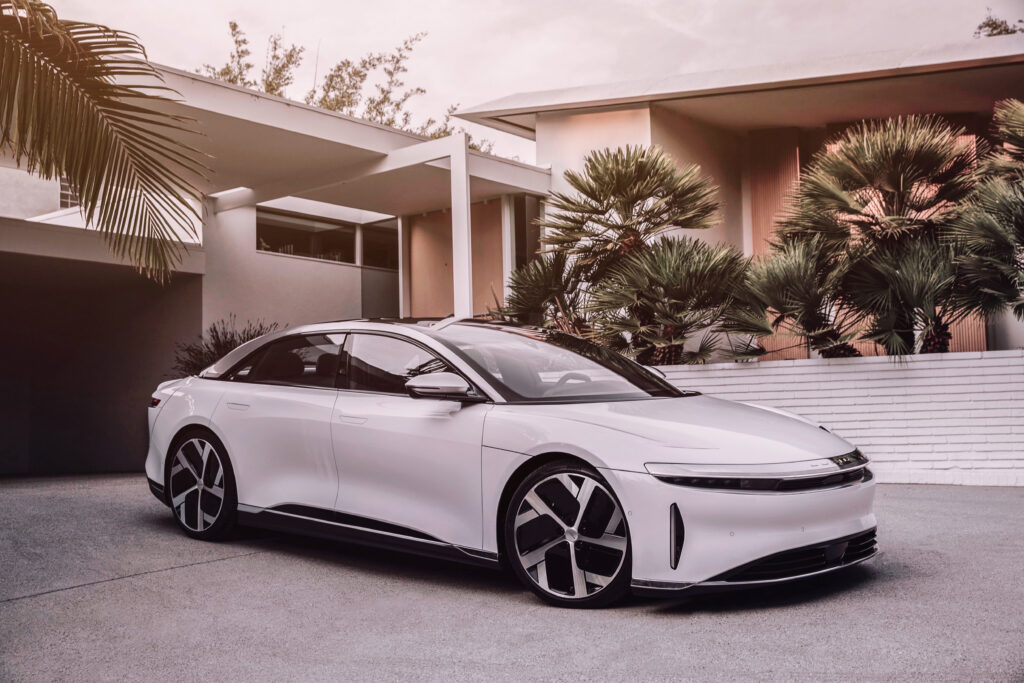
Range: 516 miles
Price: $139,000
Max charging speed: 300 kW (adding 300 miles of range in 20 minutes)
0-60 mph (fun factor): 2.6 seconds
Federal EV tax credit qualification: Yes, learn more about EV incentives here.
See our full review of the Lucid Air here.
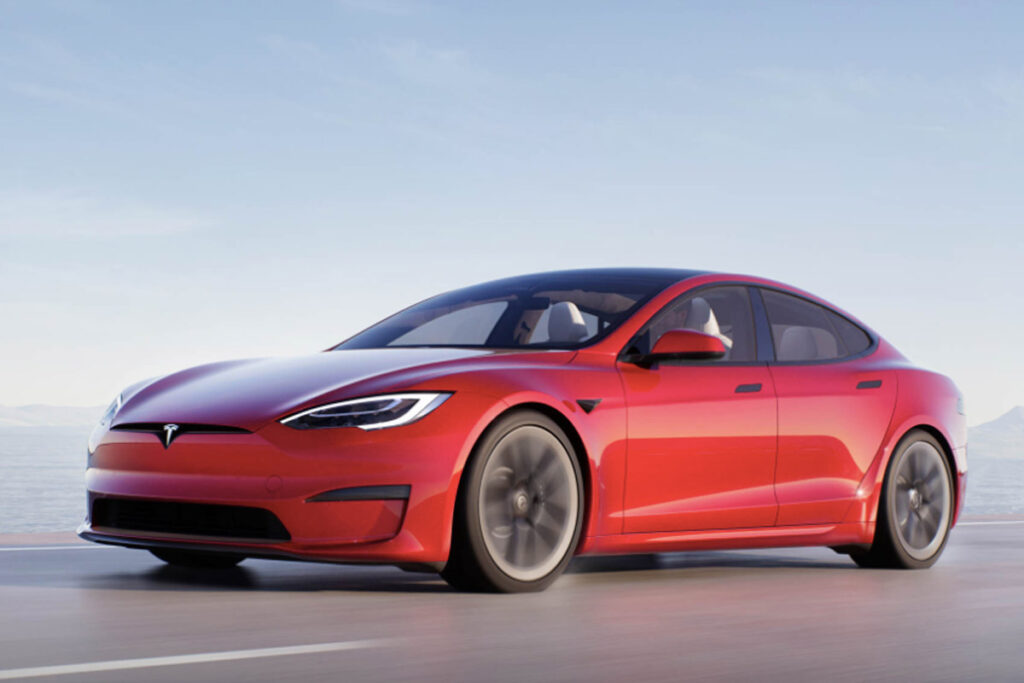
Range: 405 miles
Price: $101,990
Max charging speed: 250 kW (adding 200 miles of range in 15 minutes)
0-60 mph (fun factor): 3.1 seconds
Federal EV tax credit qualification: No, credits were exhausted. Learn about EV incentives here.
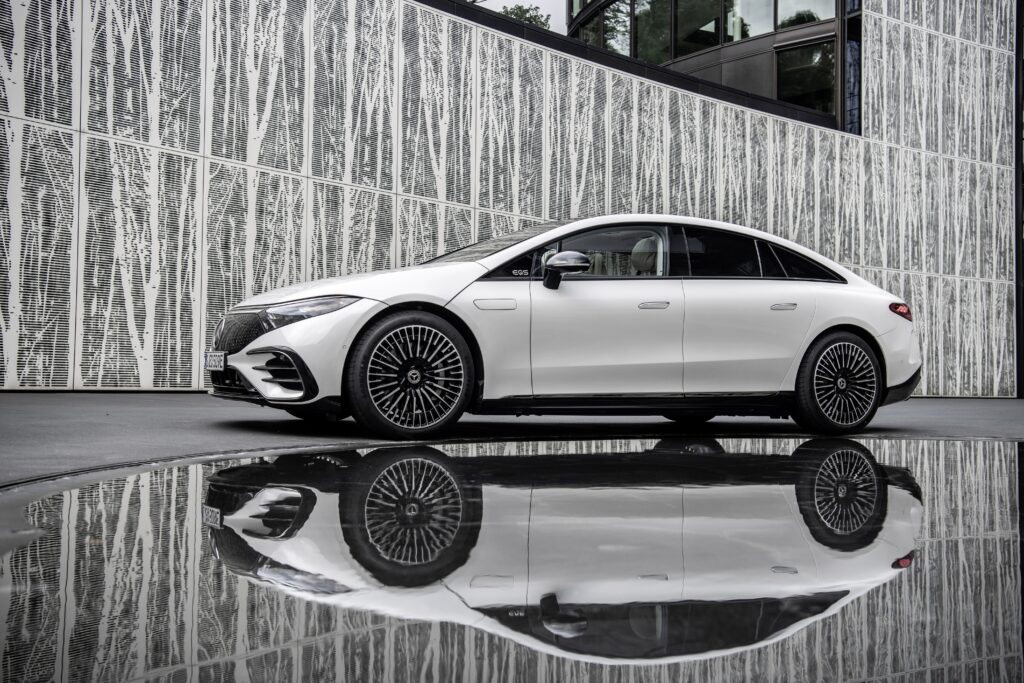
Range: 350 miles
Price: $139,000
Max charging speed: 200 kW (adding 200 miles of range in 20 minutes)
0-60 mph (fun factor): 5.5 seconds
Federal EV tax credit qualification: Yes, learn more about EV incentives here.
See our full review of the Mercedes EQS here.
What does the future hold? Not necessarily more range, surprisingly. Many auto analysts expect range for relatively affordable EVs to settle in around the 250-350 mile range. Why? Battery shortages loom on the horizon. Raw materials are in high demand, and there are only so many places on Earth to get lithium, cobalt and other materials.
Should you buy an EV now or wait? If you can find what you want for MSRP or very close to it, it just might be the right time to buy or lease. All signs point towards higher EV prices for 2023 and 2024 model years.

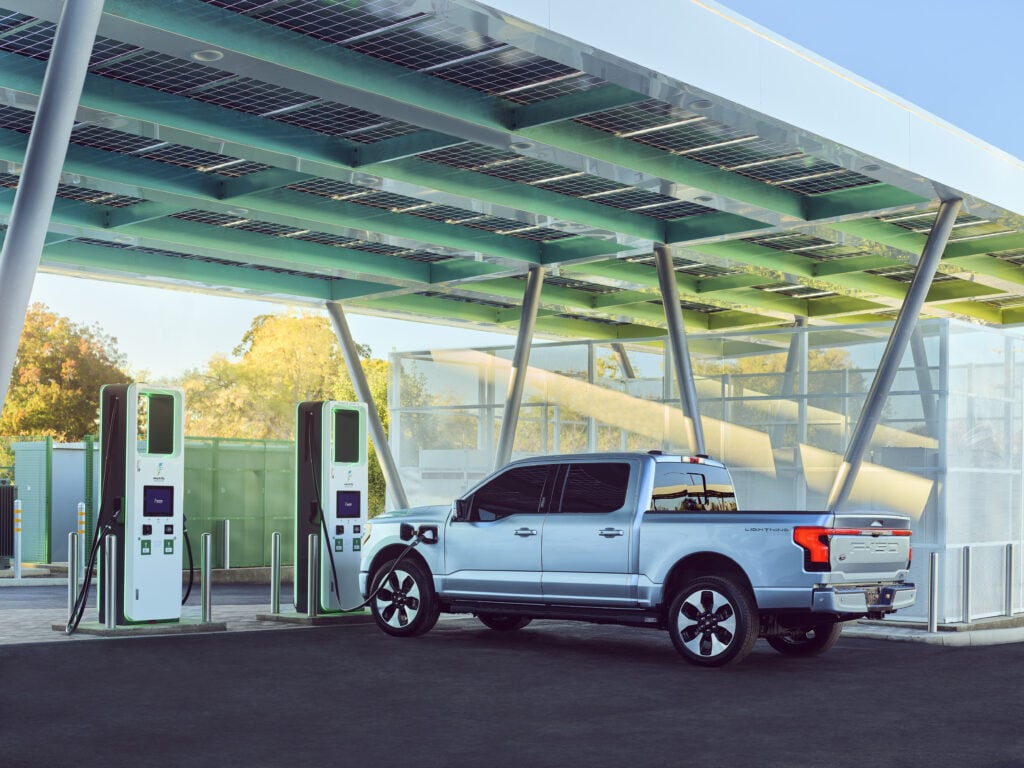
Until there’s a Carfax for electric vehicle battery health, car buyers should bear in mind the unknowns of the used EV market. We’re used to hearing of highway miles versus stop and go, or oil changes every 3,000 miles. When it comes to the health of a 1,000 pound battery pack that costs $15,000 to replace, it’s important to know how ownership habits affect the longevity and performance of a modern electric car. How does fast charging impact the health of the battery? Is it worse than plugging in at home? We’re about to address these very important questions and more.
In automotive media, we often harp on the quickest charging possible. I’m guilty of that myself, and it IS an important measure of an electric vehicle’s engineering. EVs will never win over the masses with charging rates like this. However, reliance on direct current (DC) fast charging is a real threat to the longevity of EVs that we all expect and embrace. A ruined battery with a stunted lifespan is not only an expensive fix, it’s horrible for the environment.
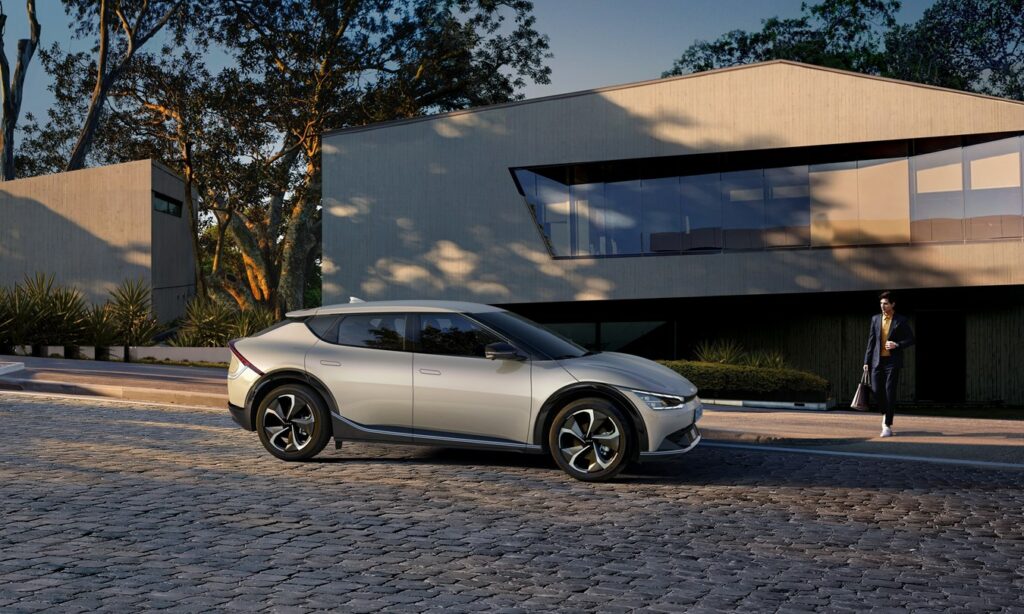
Every new tech revolution brings its own growing pains. With the personal computer came lessons learned about viruses, scammers and how to use email without annoying everyone. EVs bring a new set of challenges, but they’re challenges that can easily be overcome with a little bit of outreach and driver education.
So without further ado, here’s a public service announcement from CarEdge Electric:
Don’t rely on fast charging for your daily charging needs
Why is this important enough to shout from the rooftops? DC fast charging stresses batteries to the point of degradation. Let’s take a look at a recent literature review of what scientists have found.
Authors Bhagavathy et al. (2021) summarized the last decade’s worth of research in the realm of battery degradation. Here are the key takeaways:
Who cares, 3% to 6% is nothing, right? Not so. When most electric vehicles have a rated range of just 220 to 275 miles, every mile counts. Losing 6% of rated range to degradation would drop my own Hyundai IONIQ 5’s range from 256 miles on a charge down to 240 miles. I’d rather treat my battery nicely and keep that extra 16 miles of driving range. I might need it someday.
Other factors that reduce the longevity of EV batteries are:
Generally, 10% – 85% is the range of optimal battery health.
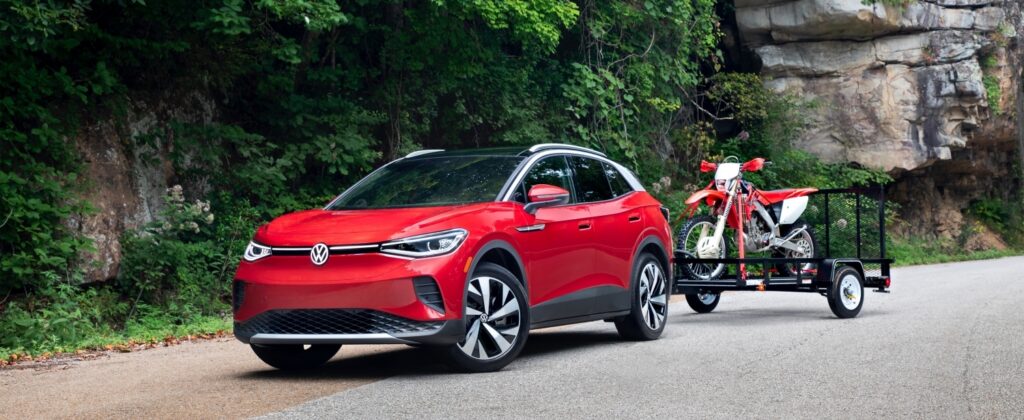
More likely than not, the electric vehicle you’re in the market for comes with some kind of free charging incentive. This is great for road trips, but be careful not to abuse the privilege. If you rely on DC fast chargers at Electrify America or Tesla Superchargers all the time simply because you can, you may end up wishing you didn’t when your range slips away quicker than expected.
Here’s everything you’ve wanted to know about Electrify America charging stations
Almost all electric vehicles use some version of the tried and true lithium ion battery. The specific chemistry of each battery is what gives it particular performance characteristics, strengths and weaknesses. Most are named after the makeup of their cathodes, the negatively-charged electrode.
To further explain, here are a few of the most common electric vehicle battery chemistries:
| Battery Chemistry | Strengths | Weaknesses | Featured In: |
|---|---|---|---|
| NCM (Lithium-Nickel-Manganese-Cobalt) | High energy density, lower cost, longer lifespan | Can't have optimal energy AND power | Ford Mustang Mach-E, F-150 Lightning, Hyundai IONIQ 5, Kia EV6, some Teslas |
| NMA (Lithium-Nickel-Manganese-Aluminum) | Cobalt-free (good for Earth) | Some have lower energy density | TBD |
| NCMA (Lithium-Nickel-Cobalt-Manganese-Aluminum) | Less cobalt (good for Earth), higher energy density | Limited supply | GM's Ultium platform, some Teslas |
| LFP (Lithium-Iron-Phosphate) | Rechargeability, long life, low cost, availability | Less energy dense, less power | Tesla Model 3 RWD |
| Solid-State (many chemistries in development) | More energy dense, safer, faster charging | Yet to be produced at mass scale | TBD |
One of the greatest strengths of the lithium-iron-phosphate (LFP) battery is its ability to withstand repeated charge and discharge cycles better than other batteries. A rear-wheel drive Tesla Model 3 with LFP batteries would not be as harmed by repeated fast-charging as an EV with other battery chemistries. Perhaps that’s why Hertz was so eager to buy 100,000 of them for their rental fleet!
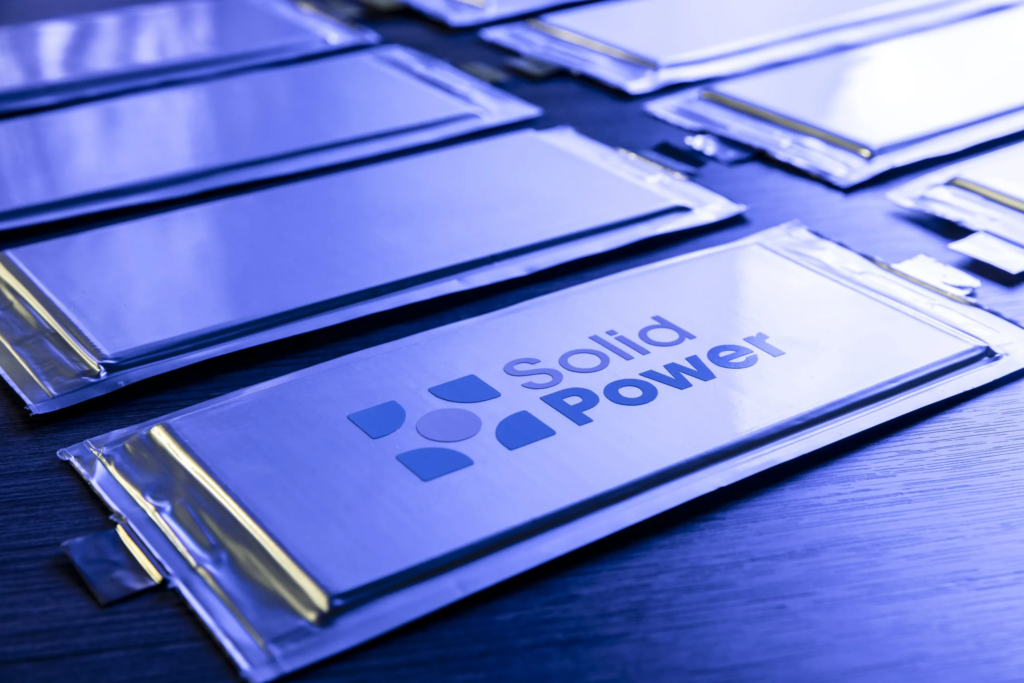
For years, engineers and EV enthusiasts alike have been anticipating the arrival of the first solid-state batteries in production electric-vehicles. When will it happen at last? It’s looking like 2025 at the earliest. And even then, solid-state batteries may only arrive in hybrid or plug-in hybrid powertrains (according to Toyota’s plan).
Other than that, the future is here folks. Competing battery chemistries are in a tug-of-war for market share and ‘strategic partnerships’, as the automakers like to call it. But more important than automaker plans is the need for drivers to learn the nuances of EV ownership. Don’t fast-charge your EV just because you can, do it when you must. Otherwise, we could be looking at a used EV market swamped with degraded and abused batteries just a few years down the road. That wouldn’t help the EV revolution one bit.

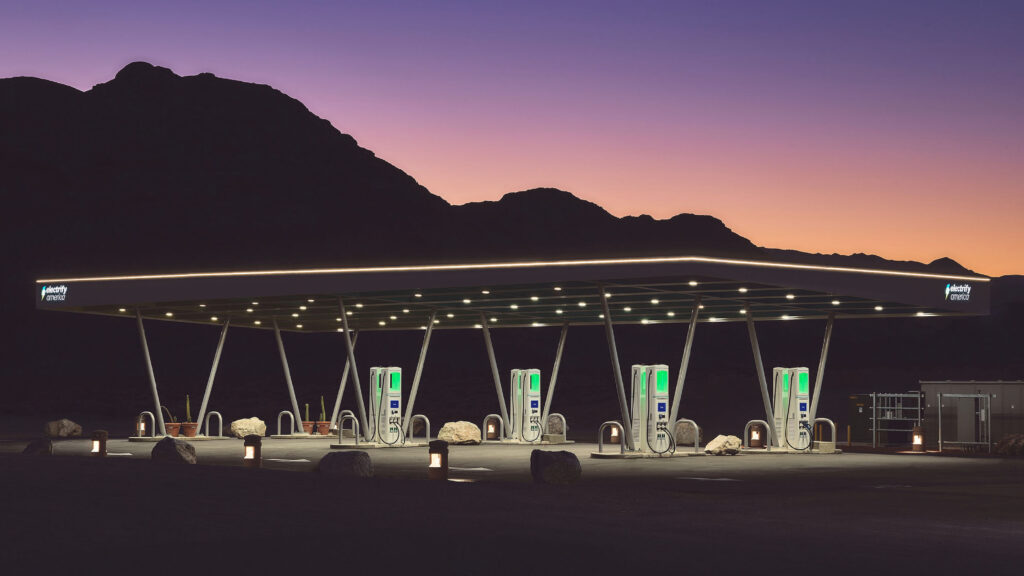
Electric vehicles are far from cheap, but many 2022 EVs come with free charging incentives that sweeten the deal. If you travel America’s interstates often, you’ll want to check out these free charging incentives. It adds up quickly!
The new Audi Q4 e-tron includes 250kWh of complimentary charging at Electrify America. Audi e-tron GT buyers get three years of free charging at Electrify America. With an EPA-rated range of 241 miles with a 77 kilowatt-hour battery pack, you’ll be good to go for plenty of charging stops. The Q4 e-tron will take about 40 minutes to charge from 10% to 80%. The much pricier e-tron GT can do the same in as little as 22 minutes.
The 2022 BMW iX SUV and i4 electric sedan will come with two years of 30-minute complimentary charging sessions at Electrify America charging stations. Depending on how much you travel, that could save you a few thousand dollars in public charging costs!
This is a better deal than it sounds. Level 2 home charging is not cheap to install, unless you’re lucky enough to live where incentives abound. Chevrolet will cover standard installation of a Level 2 charging outlet for customers who purchase or lease a 2022 Bolt EUV or Bolt EV. Learn more here. Here’s our review of the 2022 Bolt and Bolt EUV.
The 2023 Fisker Ocean is looking like it will be a popular electric crossover once it arrives. Fisker has partnered with Electrify America, however it’s not been shared if there will be a complimentary charging incentive for Ocean drivers. Regardless, it’s an amazing vehicle (on paper for now). We’re big fans of the innovative Fisker Flexee lease program.
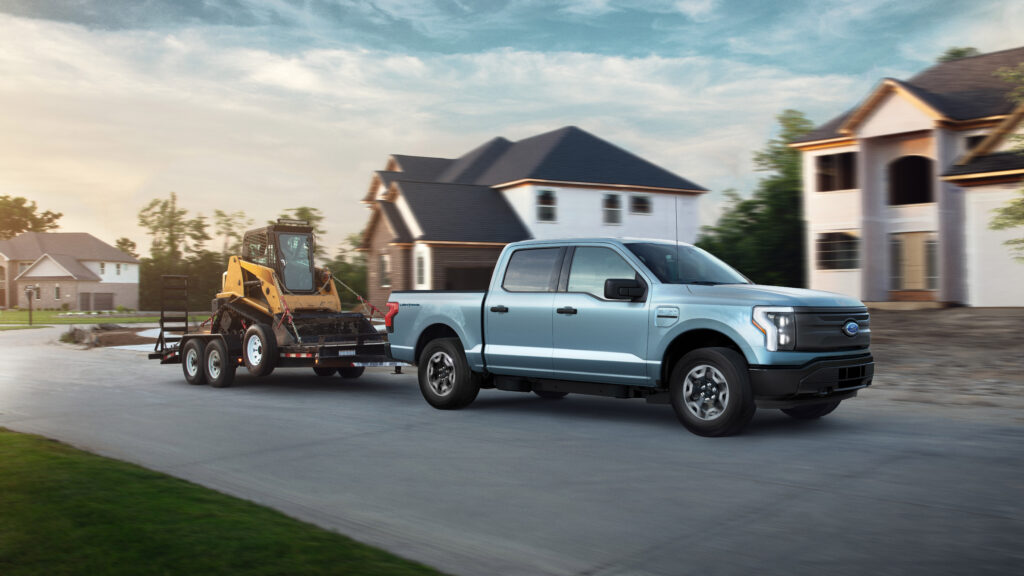
Yes, the truck we’ve all been waiting for does come with 250 kilowatt-hours of free charging at Electrify America. That’s equal to about two and a half fill-ups, or enough to drive about 700 to 800 miles in the F-150 Lightning. Once the incentive expires, expect a big charging session at Electrify America to cost about $25-35 in the F-150 Lightning. Learn more about the 2022 F-150 Lightning here.
Wondering which EVs are available in 2022? Here’s the full list, with pricing and wait times updated regularly.
Just like the F-150 Lightning, Mustang Mach-E drivers will get 250 kilowatt-hours of free charging at Electrify America. That’s enough to have about three or four free charging sessions on your first road trip. Here’s our review of the 2022 Mustang Mach-E, which by the way is one of the top-selling EVs in America (but still far behind Tesla).
The Genesis GV60 is the upscale sibling to my very own Hyundai IONIQ 5, but it comes with an even better charging incentive. Genesis GV60 buyers will get free 30-minute charging sessions for three years at Electrify America.
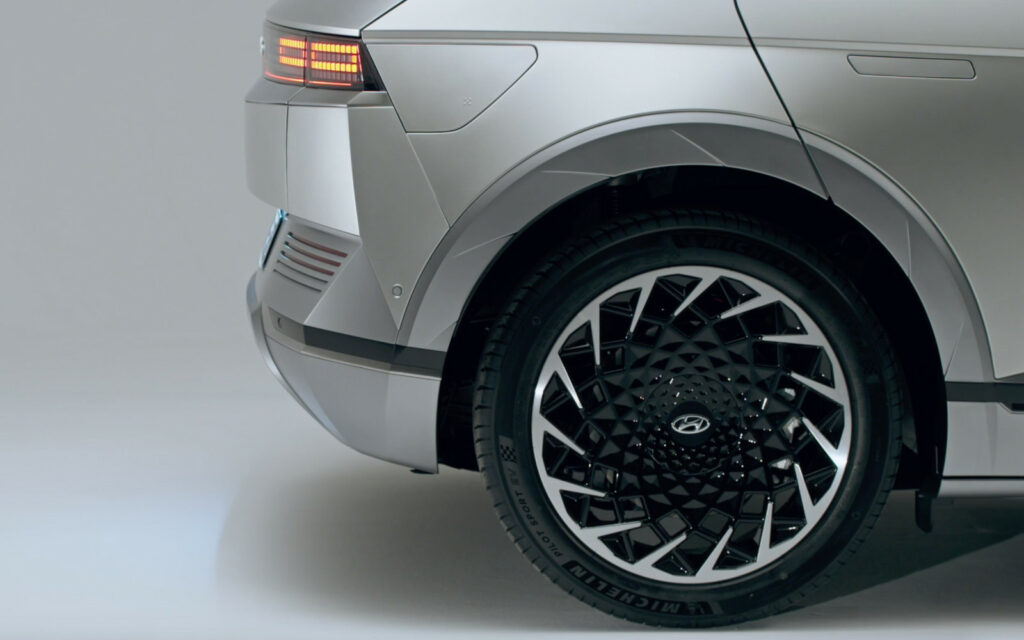
Hyundai and Kia have raced towards the top of the EV sales charts since launching their twin electric crossovers (some would argue they’re oversized hatchbacks). The Hyundai IONIQ 5 comes with two years of unlimited 30-minute charging sessions at Electrify America’s 800 stations nationwide. Electrify America is growing quickly, so it’s likely there are more than a few EA chargers along your most frequented routes.
I recently bought an all-wheel drive IONIQ 5 Limited, and I love it. Here’s how I bought one at MSRP (no markup!), plus all you ever wanted to know about the vehicle in this CarEdge review.
Kia decided to do things differently when setting up their partnership with Electrify America. EV6 owners 1,000 kilowatt-hours of free charging at Electrify America stations. The EA incentive expires after three years. With the efficiency of the Kia EV6, 1,000 kWh of free charging is likely to be good for about 3,500 miles of driving. Full review of the Kia EV6
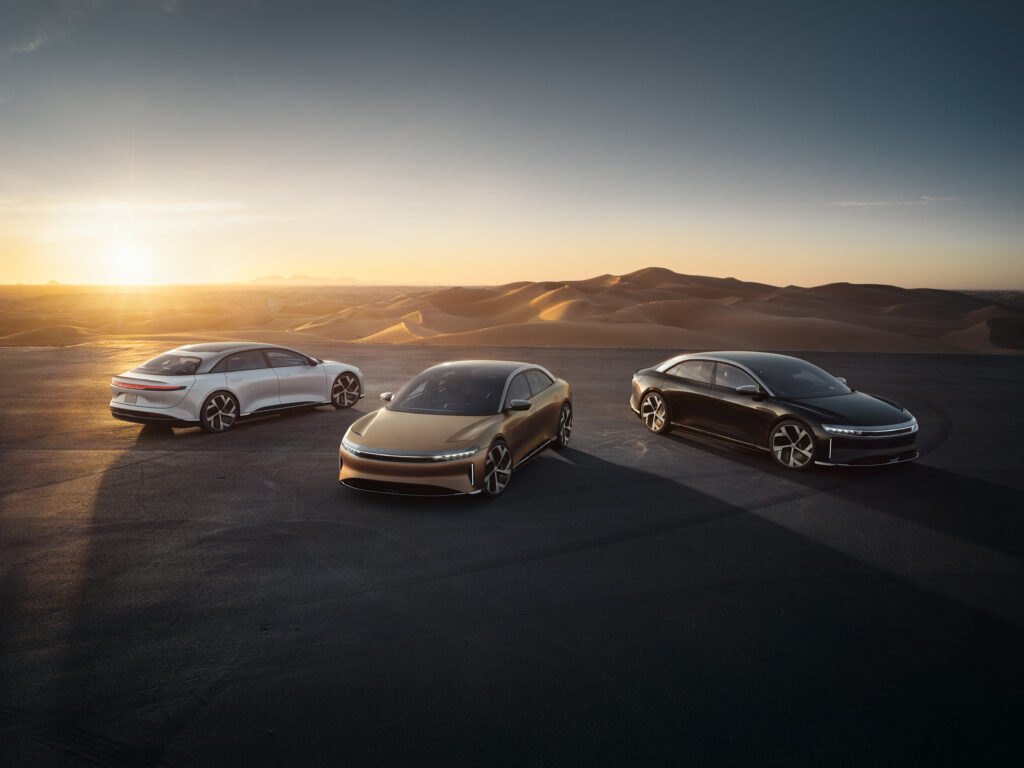
Lucid has EXTENDED their free charging partnership with Electrify America. Now, all Lucid customers who place their vehicle order before June 30, 2022 will get three years of free charging at Electrify America. Better get that wallet out! The Lucid Air starts at $77,400, however prices for top-level trims exceed $170,000. See the details here.
America’s first mass-market electric vehicle, the Nissan Leaf, is still a solid bargain in 2022.
(Check out the only cheap EVs available today)
Drivers purchasing or leasing a new Nissan LEAF receive $250 EVgo charging credits, which could last you a while with the Leaf’s 150 to 226 mile range. Here are the details from EVgo.
The first 10,000 customers who reserved a 2023 Nissan Ariya by January 31, 2022 get a $500 credit for EVgo’s growing network of charging stations. If you’re just now thinking about buying an Ariya, it’s a bit too late. Still, the Ariya is looking to be one of the nicest Nissan’s ever. Is it worth the price tag? Here’s what we think.

The Polestar 2 has several advantages over its competitors: it’s available now, starts under 50 grand, and features a no-haggle direct-to-consumer price. Another benefit of the Polestar 2 is a free charging incentive. The Polestar 2 comes with two years of free 30-minute charging sessions at Electrify America stations. That could save drivers thousands of dollars, depending on how many road trips you take.
Although it’s fantastic that Rivian is building its own charging network (like Tesla did), it’s a bit of a letdown for Rivian buyers who hoped to get a free charging incentive at Electrify America. The map below is where Rivian plans to have Adventure Network chargers, NOT where they currently are. All buyers of the Rivian R1T electric truck and R1S electric full-sized SUV will get one year of free charging on the Rivian Adventure Network.

The upside? This charging network will be specializing in rural destinations like National Parks, National Forests and the like. That will be transformative for charging in America.
Despite announcing a ‘partnership’ with America’s third-largest charging network EVgo, there’s no free charging incentive for now. As mentioned above, EVgo has 800 public fast-charging locations and 1,200 Level 2 charging stalls spanning 68 metropolitan areas and 35 states.
Although we’re a Subaru household (prior to taking ownership of our new IONIQ 5), the Solterra EV’s range, charging speed and price are a real bummer. Here’s our full review of the 2023 Subaru Solterra.
Back in the early days of the Model S, Tesla did offer insanely good free charging incentives on its young Supercharger network. From 2012 to 2018, some Tesla vehicles had free charging for life. If you’re looking for free charging or generous federal EV incentives, you’ll have to shop elsewhere.
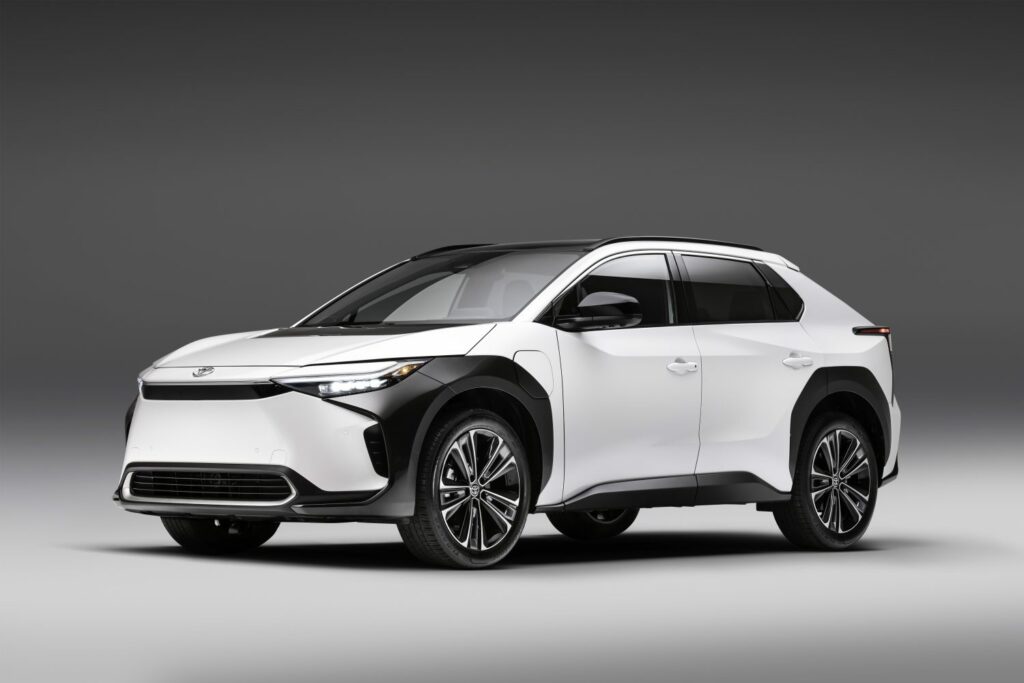
The all-new Toyota bZ4X electric crossover takes an hour to charge (at a ‘fast’ charger), has merely okay range, and isn’t all that affordable, but at least you get one year of free charging at EVgo’s network of chargers. EVgo has 800 public fast-charging locations and 1,200 Level 2 charging stalls in 35 states. Here’s why we aren’t fans of the bZ4X. Just buy a RAV4 Prime! That’s probably what Toyota wants you to do anyway.
The ID.4 has one of the best free charging incentives available today. Although the 2021 model year’s offer of three years of UNLIMITED free charging has ended, the 2022 Volkswagen ID.4 includes three years of free 30-minute charging sessions at Electrify America stations. With the 2022 model’s quicker charging rate and improved charging curve, this should be enough for most sessions to be free. Rarely will ID.4 drivers need to stay plugged in for more than 30 minutes at a DC fast charger. Full review of the VW ID.4
Buyers of the C40 Recharge and XC40 Recharge get 250 kilowatt-hours of free charging at Electrify America. But that’s not all: Volvo is also enticing drivers with a year of free access to Electrify America’s Pass+ membership, which offers charging at a discounted rate. The Pass+ membership offers charging at about 30% lower rates than using the network as a guest, but membership normally costs $4 per month.
Making the switch to an electric vehicle would be a no-brainer if they weren’t so darn expensive. It’s hard to find a cheap EV, but a few are out there. For many, free charging incentives are compelling enough to close the deal. Personally, I’ve saved a few hundred dollars in charging costs over the first few months of EV ownership by using my IONIQ 5’s Electrify America incentive.
This begs the question: would you rather have faster charging times, or longer range? Does stopping for 15 minutes every 200 miles sound better than stopping for 45 minutes every 300? Let us know what you think the future of EV charging should look like. One thing is for sure, EVs are coming to roads near you.


Until charging stations are commonplace, owning an electric vehicle will require more planning and preparation than one would expect for a day’s drive. Range is the new MPG, however real-world range isn’t easy to pin down. When the U.S. EPA provides official range ratings, the figures are based on vehicles driving in controlled environments on a predetermined track. EV ownership is full of nuances, and one of the greatest is the affect of weather on range. Let’s explore how electric vehicles perform in cold weather, hot weather, rain and wind.
Cold weather reduces EV range, but how much depends on how toasty you keep the cabin. Sub-freezing temperatures reduce range by between 12% and 30%, but that’s without the climate control on to warm the cabin. Data from AAA found that once the heater is turned on, EV range can drop by as much as 41%. Some real-world tests have found range losses closer to 50% with below-zero temperatures. That’s not good if you travel long distances across the northern states or the Interior West. More on specific impacts below.
Yes, hot weather does reduce EV range. According to research conducted by AAA, hot temperatures don’t have quite as great of an impact as cold temperatures, but it’s still noticeable. In temperatures of 95 degrees Fahrenheit and the air conditioning on, driving range decreases by 17% on average.
A 17% drop in range would mean that a Model Y normally rated for 330 miles on a charge would get closer to 273 miles. Not too big of a deal. For electric vehicles with less EPA-rated range, it matters more. The standard range 2022 Nissan Leaf normally gets 150 miles on a charge, but that would drop to 124 miles in 95-degree weather. Ouch.
Rain, snow and anything else falling from the sky does lower EV range. Why? It creates drag, and EV efficiency is all about aerodynamics. The heavier the rain, the greater the impact on range, even if temperatures are perfect for battery performance.
Speaking of which, what is the ideal temperature for electric vehicle battery performance? Geotab’s analysis of data from 4,200 EVs found that 70 degrees Fahrenheit (21.5 Celsius) is ideal for battery performance. That’s not only perfect for maximum range, it’s great weather all around. Learn more in Geotab’s full report.
Similarly, wind’s impacts on electric vehicle range have to do with drag. Drag is in essence aerodynamic friction. Your fancy new electric car can’t slide through the air so efficiently with friction working on it.
Wind can work against you or for you. With a steady tailwind pushing you along, it’s common to exceed range expectations even on the highway. When there’s a substantial headwind, range drops, and sometimes by quite a lot. The impacts of wind on EV range are much more noticeable at highway speeds. It’s possible to gain or lose up to 20% of expected range depending on wind direction.
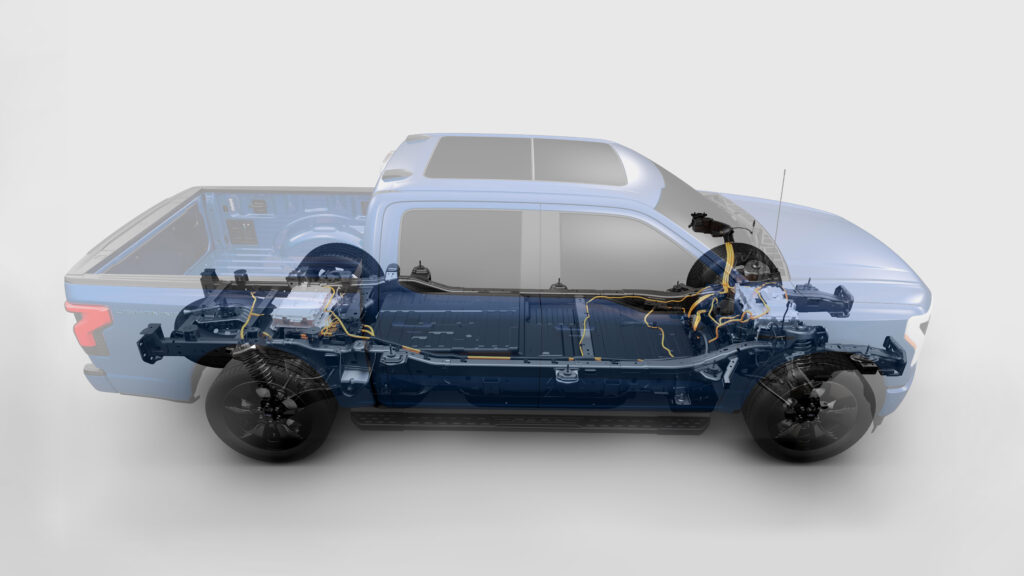
Temperature impacts battery performance differently depending on battery type and overall vehicle engineering. Features such as a heat pump, advanced battery preconditioning and even heated seats are just some of the many ways that engineers can do their best to optimize EV performance in suboptimal weather.
EV data specialists at Recurrent looked at data from all of the popular electric vehicle models. They found that EV range in hot and cold weather varies widely from one make and model to another.
Here’s how some of America’s most popular electric vehicles are affected by cold weather and summer heat.
| Make | Model | Rated Range | Real-World Range (70 deg F) | Cold Weather Range Loss |
|---|---|---|---|---|
| Tesla | Model 3 | 353 miles | 339 miles | 335 miles (-5% from rated range) |
| Tesla | Model Y | 330 miles | 320 miles | 323 miles (-2% from rated range) |
| Tesla | Model S | 405 miles | 397 miles | 380 miles (-6% from rated range) |
| Tesla | Model X | 351 miles | 326 miles | 326 miles (-7% from rated range) |
| Ford | Mustang Mach-E | 305 miles | 284 miles | 198 miles (-35% from rated range) |
| Chevrolet | Bolt | 259 miles | 254 miles | 171 miles (-34% from rated range) |
| Nissan | Leaf | 226 miles | 237 miles | 205 miles (-9% from rated range) |
| Hyundai | Kona | 258 miles | 288 miles | 240 miles (-7% from rated range) |
| Audi | e-tron | 222 miles | 224 miles | 206 miles (-7% from rated range) |
For a full breakdown of Recurrent’s findings, check out their 2021 report here.
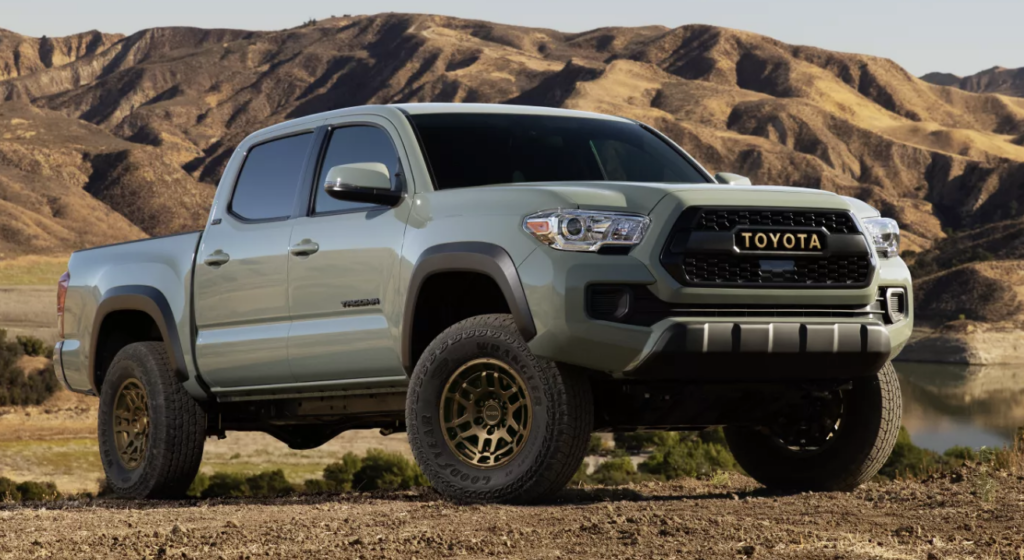
The U.S. Department of Energy says that vehicles powered by traditional internal combustion engines (ICE) also suffer efficiency losses as a result of hot and cold weather. ICE vehicles are especially impacted by hot weather due to air conditioning power requirements. The Department of Energy estimates that ICE vehicles lose about 25% of their typical fuel economy when operating with air conditioning on high settings.
One major difference between EVs and ICE vehicles is the affect of cold weather. Electric vehicles use quite a bit of energy to run the heater, whereas ICE vehicles redirect heat generated by the engine and therefore avoid significant effects on efficiency.
Although EV charging stations are becoming commonplace around major cities, many interstate highways have sparse charging infrastructure. Until charging stations are more reliable and easier to find, driving an EV in cold and hot weather will complicate EV ownership and delay EV adoption. A national charging network is on the way, and public fast-charging networks are growing quickly. With EV market share soaring every month, it’s imperative that we find solutions to this seasonal challenge that affects millions.
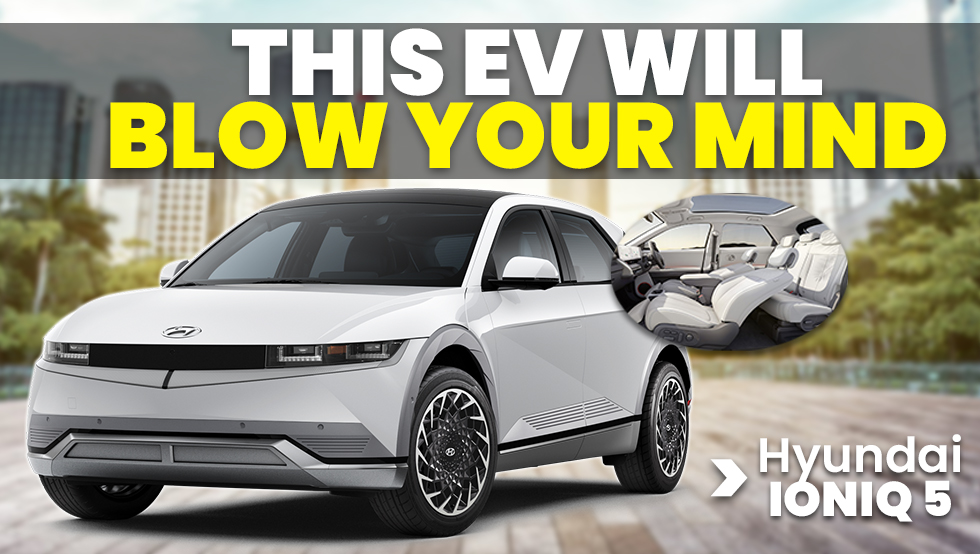
Update: I just got the recall fix done at my local Hyundai dealer. They had never seen an IONIQ 5 before, and one employee asked if I was coming in for an oil change. Nevertheless, I was in and out of the dealership in about 30 minutes.
As an IONIQ 5 owner myself, I was not thrilled to see the first manufacturer recall coming in one month into ownership. I love the car, and it would take a lot to change that. Here’s what you need to know about the 2022 Hyundai IONIQ 5 recall.
On May 12, Hyundai dealers received notification of a stop-sale for IONIQ 5 electric crossovers built between November 2021 and April 2022. The US National Highway Traffic Safety Administration (NHTSA) and Hyundai have announced a recall for select VIN numbers of the 2022 model year IONIQ 5.
The IONIQ 5 recall is for the potential for disruptions to the vehicle’s parking actuator system when the vehicle is off. Sudden voltage fluctuations may occur while the vehicle is off, potentially causing the parked vehicle to disengage from ‘Park’ momentarily. If this occurs while the vehicle is parked on uneven terrain, vehicle rollaway is possible.
While no incidences have been reported in North America, 4 incidences have occurred in South Korea. No injuries have been reported. This is a serious recall with the potential for crashes and injuries if preventative action is not taken.
My own IONIQ 5 is affected, so I’ve experienced this firsthand. Upon entering my vehicle’s VIN number into Hyundai’s online recall search tool, the following summary and technical information was displayed:
“Hyundai is initiating a safety recall to address a condition involving the parking actuator system in certain 2022 model year Hyundai IONIQ 5 vehicles in the U.S. and Canada. Hyundai is initiating this action to ensure the safety of its vehicles for Hyundai customers.”
“The shift-by-wire system in the subject vehicles contains a shifter control unit (“SCU”) and electronic parking pawl actuator. A voltage fluctuation may occur with the vehicle off and in the park (P) position, which could impact the command signal from the SCU to the parking actuator, resulting in momentary disengagement of the parking pawl and potential vehicle rollaway. Vehicle rollaway after parking increases the risk of a crash and/or injuries.”
“Hyundai recommends all affected owners to use their electronic parking brake (“EPB”) when parking their vehicles to mitigate the risk of vehicle roll-away before the recall is performed. All owners of the subject vehicles will be notified by first class mail with instructions to bring their vehicles to a Hyundai dealer to have the SCU software updated. This remedy will be offered at no cost to owners for all affected vehicles, regardless of whether the affected vehicles are still covered under Hyundai’s new vehicle limited warranty.”
I’m not a fan of all-caps, so I typed it out for you above. But here’s how Hyundai shared the recall information:
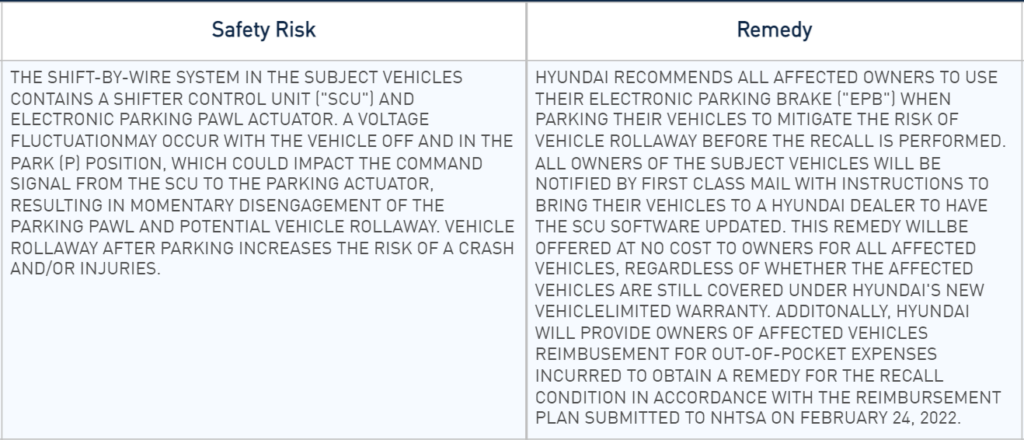
To see if your Hyundai IONIQ 5 is affected by this recall, enter your vehicle’s VIN number into the database at Hyundai’s online recall search tool. Affected owners will be notified, but the quickest way to find out if you’re affected is to use the online tool.
Recalls happen all the time, but I sure wish this could be fixed with an over-the-air update from the convenience of my home. Even Tesla electric vehicles see an abundance of recalls, but Tesla’s integration of OTA update capability rarely makes them an inconvenience. While you await your dealer service center visit, Hyundai says it’s best to engage the parking brake to prevent possible vehicle roll-away. Don’t park on a hill without the parking brake engaged.
As an IONIQ 5 owner myself, I’ll be following the situation closely. Check back for updates.